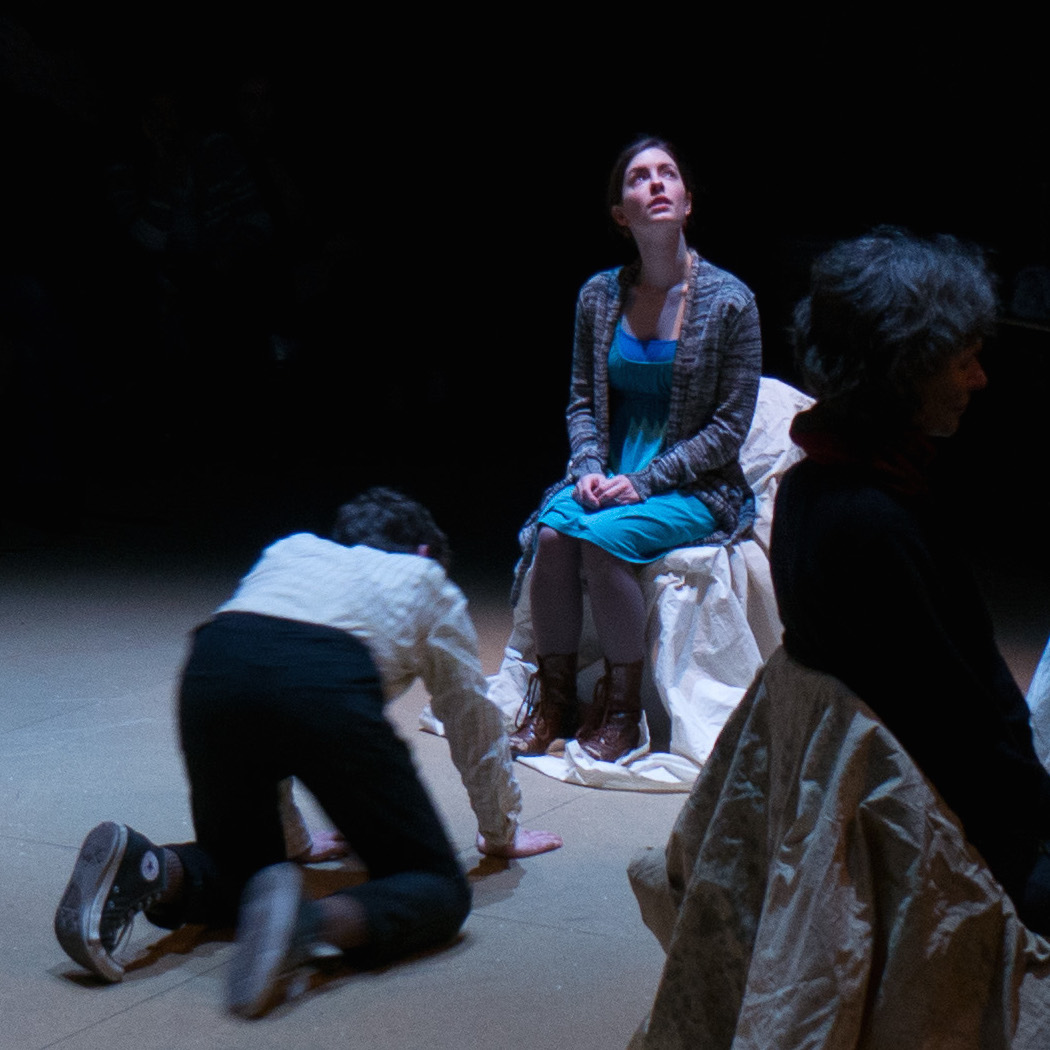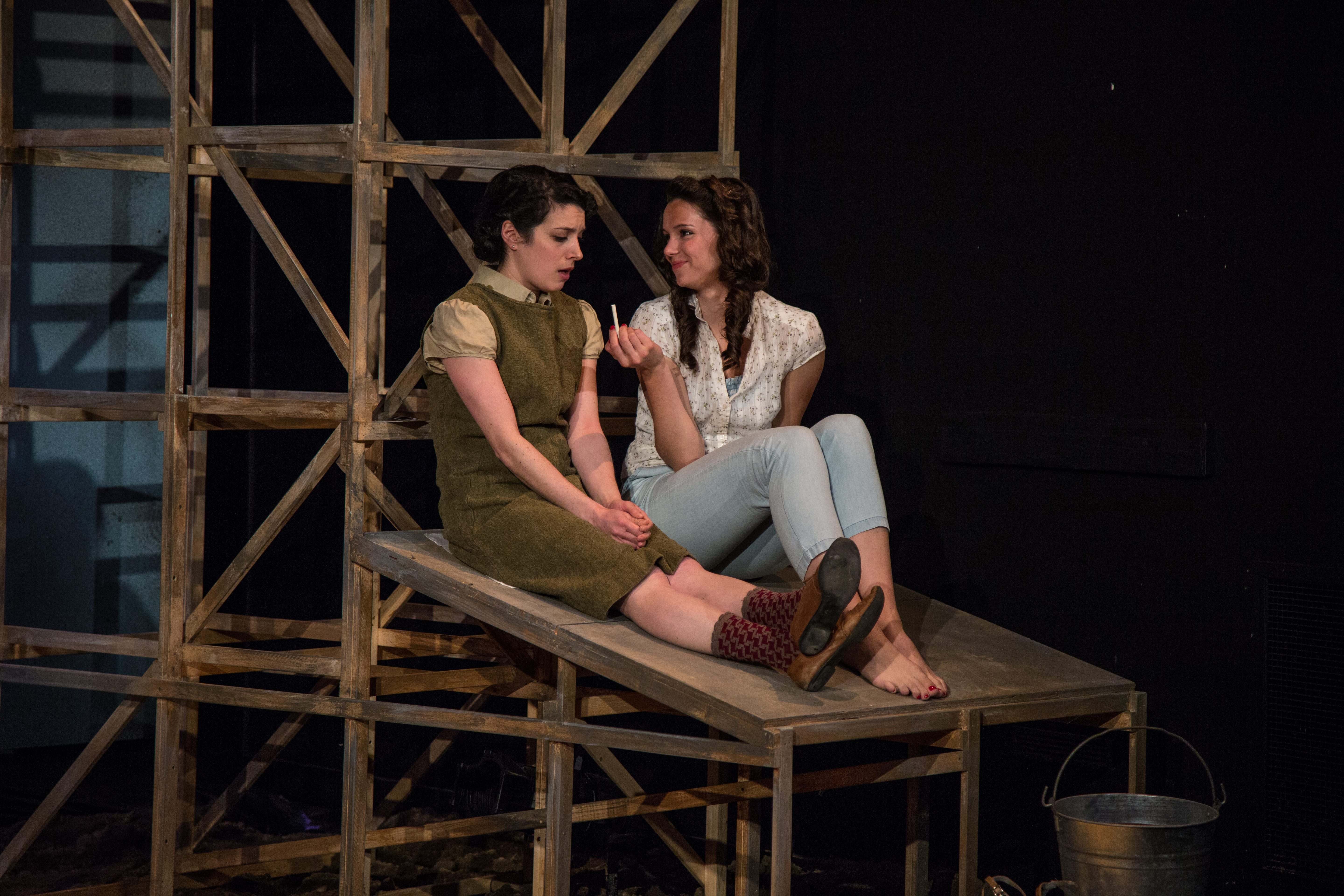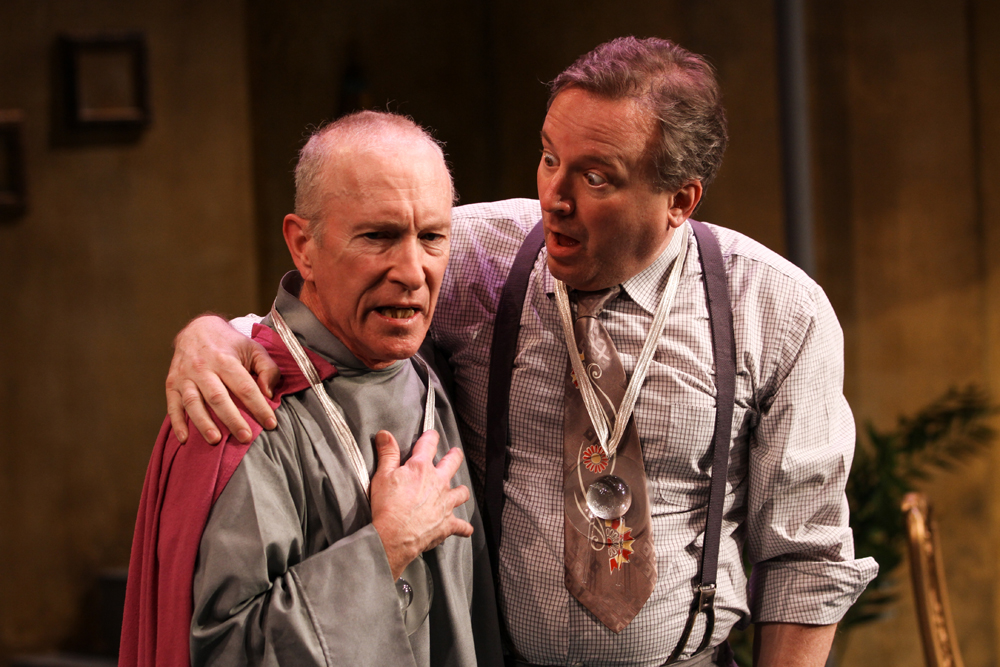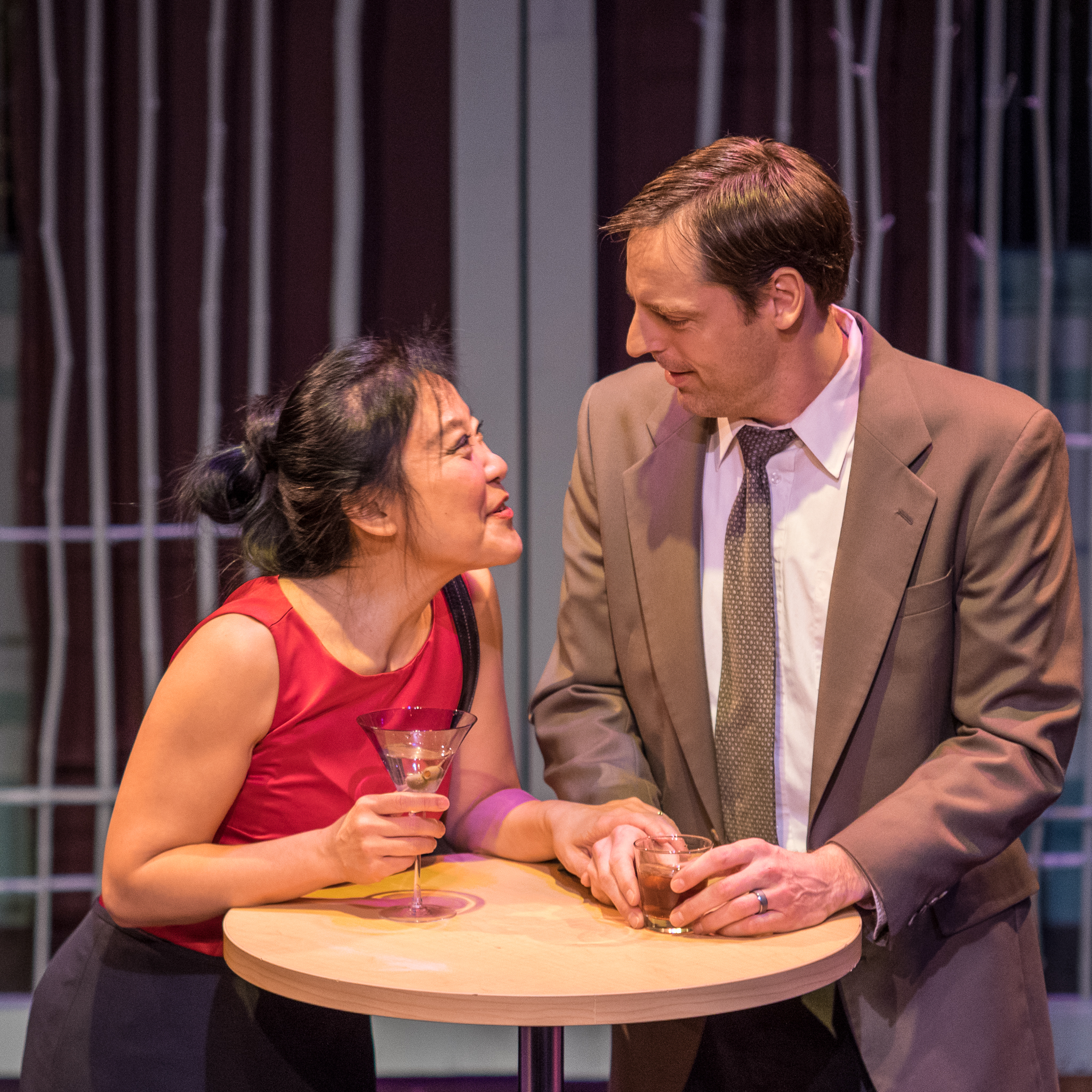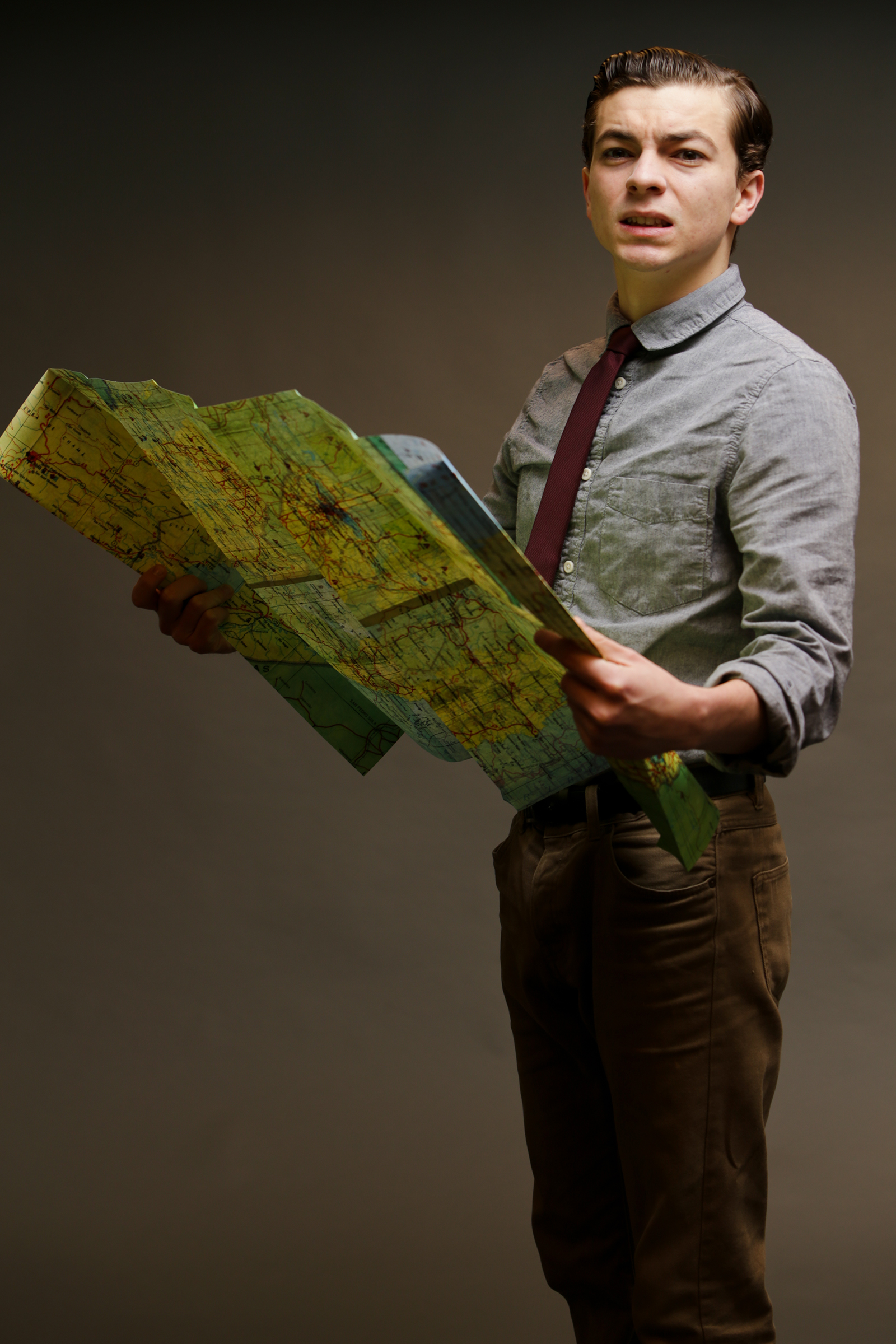On the surface, Thornton Wilder’s Our Town is bland and dreary. When it debuted in 1938, Variety called it an “extravagant waste of fine talent.” Despite this, it went on to Broadway, garnered Wilder his second of three Pulitzers, and became one of the most-performed works in theater history. (Some avoid it for just that reason; I happened to be an Our Town virgin.)
Our Town is quintessential meta-theater. Wilder’s stage directions are simple: “No curtain. No scenery.” When we enter the show, we walk onto the stage. The play’s stage manager (Amy Thone) matter-of-factly tells us where we are and who we see; she informs us this is a play. She takes us back in time to 1901, to the provincial town of Grover’s Corners, New Hampshire, where things are slowly changing (and America, by implication, along with it).
We’re introduced to the locals: Dr. Gibbs and his wife (Rob Burgess and Marianne Owen), Mr. Webb and his wife (Greg Lyle-Newton and Sheila Daniels), their children, and their neighbors. We hear histories and gossip. We are witness to blossoming love between sporty young George Gibbs (Joe Cummings) and the bookish but beautiful Emily Webb (Anastasia Higham). And finally we see the inevitable loss.
Our Town has a clear arc that symbolizes in microcosm the life cycle of a community: daily life, love and marriage, and finally death. What is doesn’t have, however, is much dramatic action. Protagonists, antagonists, plot points, and denouement are muddled together. What’s left is mainly milieu. Our Town was Wilder’s reaction to the theater around him. He felt this “theater was not only inadequate, it was evasive.” Yet today the result is theater that’s almost invasive—a condescending reminder of things we already know, a guiding hand that makes decisions for us and tells us how to think.
As a result, though well cast and directed (by Greg Carter), this Strawberry Theatre Workshop production makes a better case for the company than for the text itself. Efforts have been made to connect Our Town with our town—including local celebs taking the role of Professor Willard, who describes the anthropological history of Grover’s Corners. The stage also nods to our present flush times: a construction set replete with Spackle, ladders, sawhorses, etc. But Seattle is booming while Grover’s Corners, at the fin de siecle, was fading. By 1938, amid the fatalism of the Great Depression, Wilder and his audience knew that. The old America was gone. In 2015, the poignancy of Our Town does still resound. For this critic, however, the only thing that made it novel was watching it for the first time.
stage@seattleweekly.com
OUR TOWN 12th Avenue Arts, 1620 12th Ave., 800-838-3006, strawshop.org. $18–$36. 7:30 p.m. Thurs.–Sat., 2 p.m. Sun. Ends Feb. 21.
